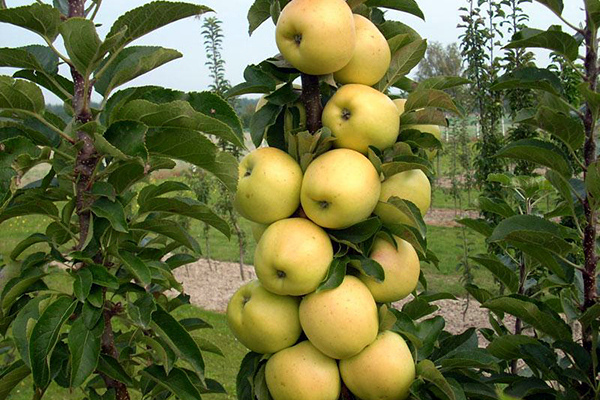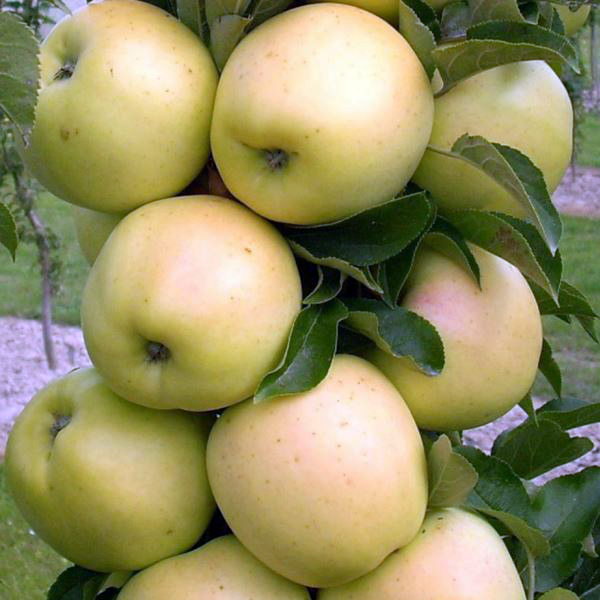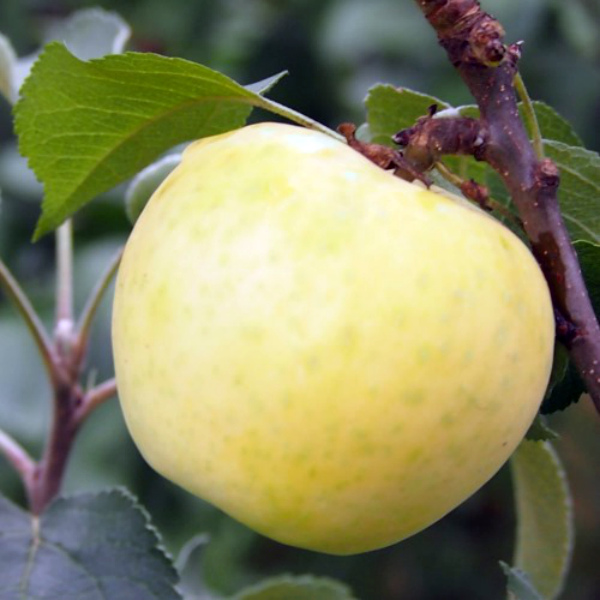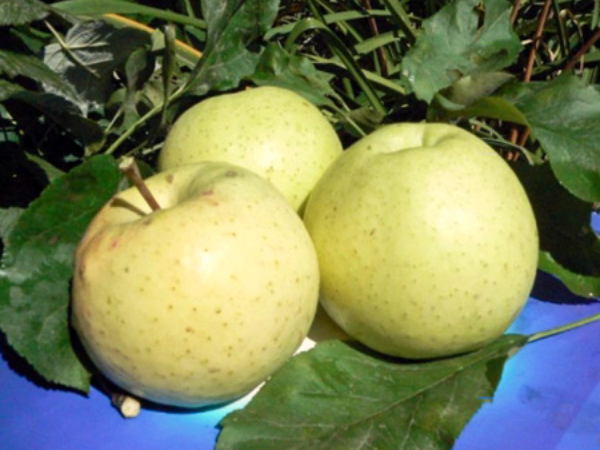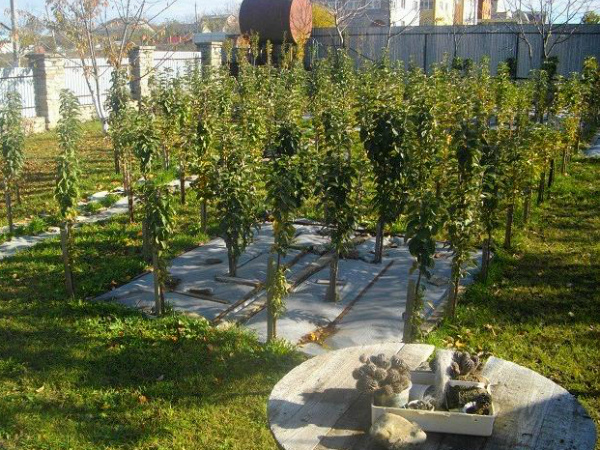Columnar apple Medoc: growing and care
Content
About columnar apple trees
Many gardeners are not even aware of the existence of columnar trees, or they consider them to be something prohibitively difficult in agricultural technology, requiring care at the level of a royal person. In fact, there is nothing difficult in growing such trees. On the contrary, agricultural technology is extremely simple, and it is very convenient to care for small trees.
For the first time, a columnar apple tree was bred in Canada, having discovered an unusual shoot on an old apple tree. Over time, breeders became interested in the unusual type of growth structure and launched research work. At its core, the columnar apple tree is very similar to the pyramidal poplar. Fruiting is concentrated on numerous annelids, so that the apples are evenly distributed throughout almost the entire trunk. At the same time, columnar trees are low, rarely exceeding 2.5 meters, which makes them incredibly comfortable in the garden.
Small trees are nevertheless able to withstand a harvest of up to 12-15 kilograms. Of the main disadvantages, it should be noted that no matter what sort of columnar trees you choose, their root system will still be located quite close to the surface, which significantly reduces their winter hardiness.
With the exception of low frost resistance, columnar trees pay off all costs already in the first years of growth.
Brief description of the Medoc variety
Columnar apple variety "Medoc" belongs to the autumn species, the fruits of which ripen at the end of August until mid-September. The variety has an incredibly sweet taste that really resembles honey, while the apples themselves are of a pleasant yellow color, which look very beautiful on the tree. Unfortunately, “Medoc” apples cannot be stored for a long time, they retain their commercial qualities for only one month. That is why the fruits are often used for conservation, making jam, jam or dried fruits. And, of course, they are consumed fresh.
Characteristic
The apple-tree column "Medoc" belongs to natural semi-dwarfs, growing in height up to about 2-2.5 meters. The best rootstocks for the variety are 62-396 and “Mark”. The crown of trees is small, compact, rarely exceeding 25 centimeters in diameter. The stability of the apple tree is given by a strong, highly developed root system, which allows planting seedlings even in very windy areas, on the one hand, and on the other hand, it increases the tree's immunity to various kinds of diseases.
The columnar apple of this variety bears fruit with medium-large fruits, the weight of which ranges from 100 to 250 grams. It should be noted that the size of apples is largely influenced by the care that you provide to the trees. Medoc apples are round in shape with a dense rind of white-yellow color without blush. The pulp is juicy, very sweet, white in color with a coarse-grained structure.
Fruiting
The variety belongs to the early-growing - the first harvest, albeit small, can be obtained already in the first year of cultivation during spring planting. However, it is recommended to break off all ovaries in the first year to get a full harvest the next year. Apple trees of this variety enter the peak of fruiting in the 5th year of cultivation, bringing 9 kilograms of apples from each tree. Intensive care, which the columnar variety of apple trees loves, will significantly increase yields.
Frost resistance
Despite the fact that the average columnar apple tree is not winter hardy, this variety can withstand extremely low temperatures down to -42 ° C. Such resistance allows growing the variety in the conditions of the Middle Lane, in the Moscow region, as well as in almost all corners of Siberia.
Frost resistance in a sense simplifies the autumn care of trees of this variety, since you do not have to worry about the quality and quantity of mulch in the trunk circle.
Planting and leaving
Given the frost resistance of the variety, planting of seedlings can take place both in early spring and in autumn.
The best place for growing will be the lowlands, where a lot of snow accumulates, which acts as a natural mulch and saves the roots of the tree from freezing and death.
Planting is carried out according to the scheme: 45 centimeters of distance between seedlings, 50 centimeters of the depth of the pit, the width is adjusted to the size of the roots, 50 centimeters of the row spacing. The planting pits are filled with a mixture of fertile soil, humus, superphosphate, potassium and urea. Before planting, the roots of the seedling are straightened, being careful not to damage it. When planting, the earth must be tamped, and at the end, the hole must be watered abundantly.
The variety responds favorably to feeding with urea in the spring, as well as a mixture of phosphate and potassium during the flowering period. During fruiting, it is also recommended to apply potassium and phosphate with a small amount of organic fertilizer so that the tree forms large fruits. Like any other variety of apple trees, this one requires preventive treatment with fungicides and insecticides of complex action in order to minimize the likelihood of being affected by fungal diseases or an invasion of aphids, moths or leaf rollers.
The care that this variety requires also includes regular watering, which is carried out at least 2 times a week, and loosening the soil both in the trunk circle and in the aisle. This is done to provide oxygen to the roots.
For the winter, it is recommended to wrap the trunk and lower branches with some durable material, for example, a metal mesh, to protect the tree from the invasion of mice and hares, which love to feast on bark and shoots.
Video "Apple tree trunk protection"
This is a video with tips on how to prepare a fruit tree for winter, what work needs to be done in the fall to protect the trunk from cold weather and rodents.

